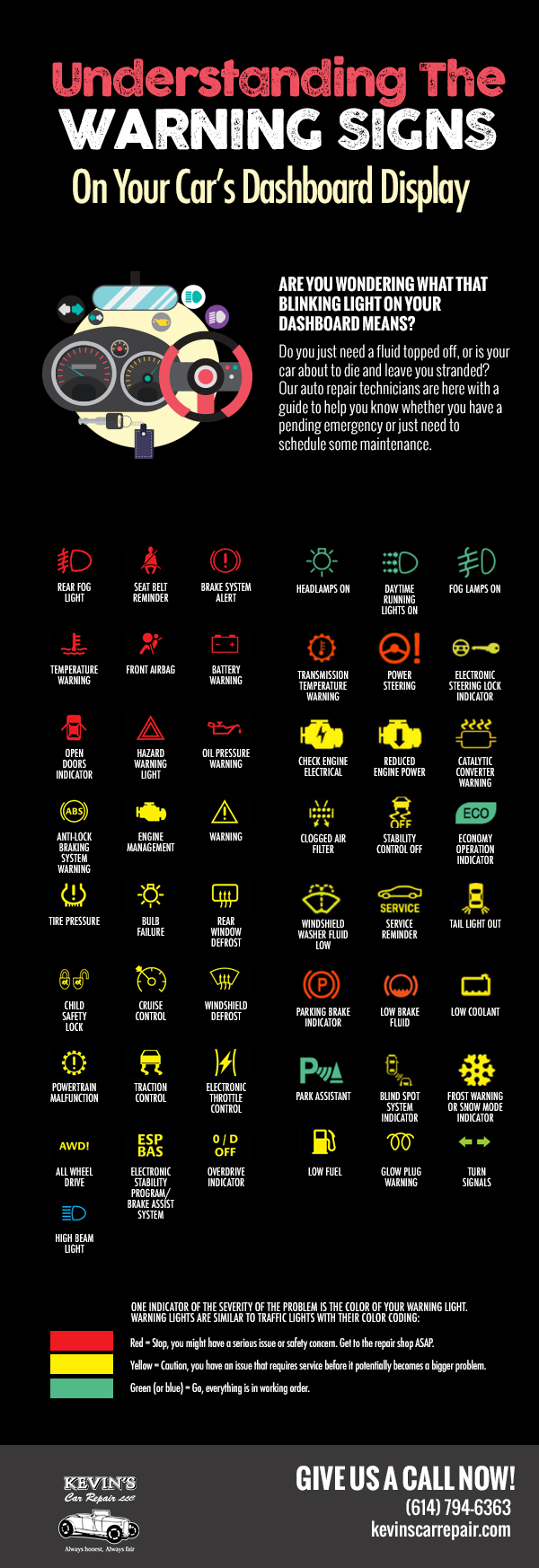Understanding The Relevance Of Your Car'S Warning Signals: What They In Fact Stand For
Understanding The Relevance Of Your Car'S Warning Signals: What They In Fact Stand For
Blog Article
Content Composed By-Samuelsen Alvarado
When you're behind the wheel, those radiant caution lights on your control panel can be a little bit perplexing. Do ceramic coating recognize what they're attempting to tell you regarding your auto's health? Comprehending the relevance of these lights is important for your safety and the durability of your automobile. So, the following time one of those lights turns up, wouldn't you wish to analyze its message properly and take the necessary actions to resolve it?
Common Caution Lighting and Interpretations
Recognize typical warning lights in your car and understand their significances to make sure safe driving.
The most common warning lights consist of the check engine light, which signifies problems with the engine or exhausts system. If this light begins, it's vital to have your automobile checked promptly.
The oil stress alerting light suggests reduced oil stress, calling for instant interest to prevent engine damage.
A flashing battery light could recommend a faulty billing system, possibly leaving you stranded otherwise resolved.
The tire stress tracking system (TPMS) light alerts you to reduced tire pressure, affecting automobile security and gas efficiency. Overlooking this could cause dangerous driving conditions.
The abdominal muscle light suggests a problem with the anti-lock braking system, compromising your capability to stop swiftly in emergency situations.
Finally, the coolant temperature alerting light warns of engine overheating, which can lead to severe damage if not resolved swiftly.
Understanding these usual warning lights will assist you address problems immediately and preserve safe driving problems.
Relevance of Prompt Focus
Comprehending the common warning lights in your auto is only the first step; the significance of immediately attending to these cautions can't be highlighted enough to guarantee your safety and security when driving.
When a warning light illuminates on your dashboard, it's your cars and truck's way of interacting a possible problem that requires attention. Overlooking these warnings can lead to much more extreme troubles later on, jeopardizing your security and potentially costing you much more out of commission.
Motivate focus to advising lights can protect against break downs and mishaps. For instance, a flashing check engine light could suggest a misfire that, if left ignored, can create damage to the catalytic converter. Resolving https://brake-check39406.ja-blog.com/31264484/ready-to-reveal-the-concealed-facts-of-automobile-repair-service-with-exceptional-explorations-that-will-certainly-move-your-point-of-view-you-ll-be-amazed-by-what-you-didn-t-understand without delay can save you from an expensive repair work.
Similarly, a brake system warning light could signify reduced brake fluid or worn brake pads, vital elements for your safety and security when driving.
DIY Troubleshooting Tips
If you discover a warning light on your control panel, there are a couple of do it yourself fixing pointers you can attempt before looking for professional assistance.
The primary step is to consult your auto's handbook to comprehend what the details caution light suggests. Often the concern can be as basic as a loosened gas cap causing the check engine light. Tightening the gas cap might resolve the problem.
Another usual concern is a low battery, which can cause various alerting lights. Examining the battery connections for corrosion and guaranteeing they're protected may take care of the trouble.
If a warning light continues, you can attempt resetting it by separating the cars and truck's battery for a couple of mins and after that reconnecting it. Furthermore, examining your vehicle's liquid levels, such as oil, coolant, and brake fluid, can aid repair cautioning lights related to these systems.
Conclusion
In conclusion, understanding your auto's warning lights is essential for maintaining your car running smoothly and safely. By promptly attending to these alerts and recognizing what they mean, you can stay clear of costly repair services and possible malfunctions.
Bear in mind to consult your vehicle's handbook for certain information on each advising light and do something about it accordingly to make certain a trouble-free driving experience.
Keep informed, stay secure when traveling!
